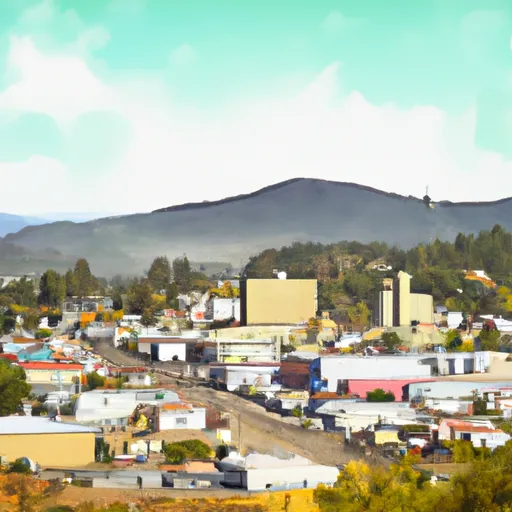-
 Snoflo Premium
Snoflo Premium
Get unlimited access to all our content
With no Ad interruptions! - Start Your Free Trial Login with existing account
Klamath
Eden Index
Climate
7.6
•
Recreation
3.7
•
Community
0.5
•
Safeguard
4.4/10

Klamath, California is a small community located in Del Norte County, on the banks of the Klamath River. The town experiences a mild coastal climate, with cool summers and rainy winters. Average temperatures range from the 50s to 70s°F (10s to 20s°C), making it a comfortable destination for outdoor activities year-round.
The Klamath River is the main hydrological feature in the area, flowing through the town and providing opportunities for fishing, boating, and kayaking. The river is famous for its salmon runs, attracting anglers from far and wide. Additionally, the Klamath National Forest surrounds the area, offering hiking and camping opportunities in the scenic wilderness.
Outdoor enthusiasts can explore the nearby Redwood National and State Parks, where towering ancient redwood trees create a breathtaking environment for hiking, wildlife viewing, and photography. The area is also home to numerous trails, including the Coastal Trail, which winds along the rugged coastline, providing stunning views of the Pacific Ocean.
In summary, Klamath, California offers a mild coastal climate, a beautiful river, and access to stunning natural landscapes, making it an ideal destination for outdoor enthusiasts seeking a variety of recreational opportunities.
What is the Eden Index?
The Snoflo Eden Index serves as a comprehensive rating system for regions, evaluating their desirability through a holistic assessment of climate health, outdoor recreation opportunities, and natural disaster risk, acknowledging the profound impact of these factors on livability and well-being.
Climate Health Indicator (CHI): 7.6
Klamath receives approximately
2064mm of rain per year,
with humidity levels near 73%
and air temperatures averaging around
12°C.
Klamath has a plant hardyness factor of
9, meaning
plants and agriculture in this region tend to thrive here all year round.
By considering the ideal temperature range, reliable water supplies, clean air, and stable seasonal rain or snowpacks, the Climate Health Indicator (CHI) underscores the significance of a healthy climate as the foundation for quality living.
A healthy climate is paramount for ensuring a high quality of life and livability in a region, fostering both physical well-being and environmental harmony. This can be characterized by ideal temperatures, reliable access to water supplies, clean air, and consistent seasonal rain or snowpacks.
Weather Forecast
Streamflow Conditions
Klamath
Area Rivers
Klamath
Snowpack Depths
Klamath
Reservoir Storage Capacity
Klamath
Groundwater Levels
Recreational Opportunity Index (ROI): 3.7
The Recreational Opportunity Index (ROI) recognizes the value of outdoor recreational options, such as parks, hiking trails, camping sites, and fishing spots, while acknowledging that climate plays a pivotal role in ensuring the comfort and consistency of these experiences.
Access to outdoor recreational opportunities, encompassing activities such as parks, hiking, camping, and fishing, is crucial for overall well-being, and the climate plays a pivotal role in enabling and enhancing these experiences, ensuring that individuals can engage in nature-based activities comfortably and consistently.
Camping Areas
| Campground | Campsites | Reservations | Toilets | Showers | Elevation |
|---|---|---|---|---|---|
| Gold Bluffs Beach - Prarie Creek Redwoods State Park | 25 | 12 ft | |||
| Florence Keller County Park | 50 | 54 ft | |||
| Patrick Creek | 13 | 834 ft | |||
| Big Lagoon County Park | 25 | 10 ft | |||
| Patricks Point State Park | 124 | 212 ft | |||
| Grassy Flat | 19 | 671 ft | |||
| Mill Creek - Del Norte Coast Redwoods State Park | 145 | 497 ft | |||
| Elk Prairie - Prairie Creek Redwoods State Park | 68 | 116 ft | |||
| Humboldt Lagoons State Park | None | 38 ft | |||
| Jedediah Smith Redwoods State Park | 106 | 238 ft |
Nearby Fishing
Nearby Ski Areas
Catastrophe Safeguard Index (CSI):
The Catastrophe Safeguard Index (CSI) recognizes that natural disaster risk, encompassing floods, fires, hurricanes, and tornadoes, can drastically affect safety and the overall appeal of an area.
The level of natural disaster risk in a region significantly affects safety and the overall livability, with climate change amplifying these risks by potentially increasing the frequency and intensity of events like floods, fires, hurricanes, and tornadoes, thereby posing substantial challenges to community resilience and well-being.
Community Resilience Indicator (CRI): 0.5
The Community Resilience Indicator (CRI) recognizes that education, healthcare, and socioeconomics are crucial to the well-being of a region. The CRI acknowledges the profound impact of these elements on residents' overall quality of life. By evaluating educational resources, healthcare accessibility, and economic inclusivity, the index captures the essential aspects that contribute to a thriving community, fostering resident satisfaction, equity, and social cohesion.

